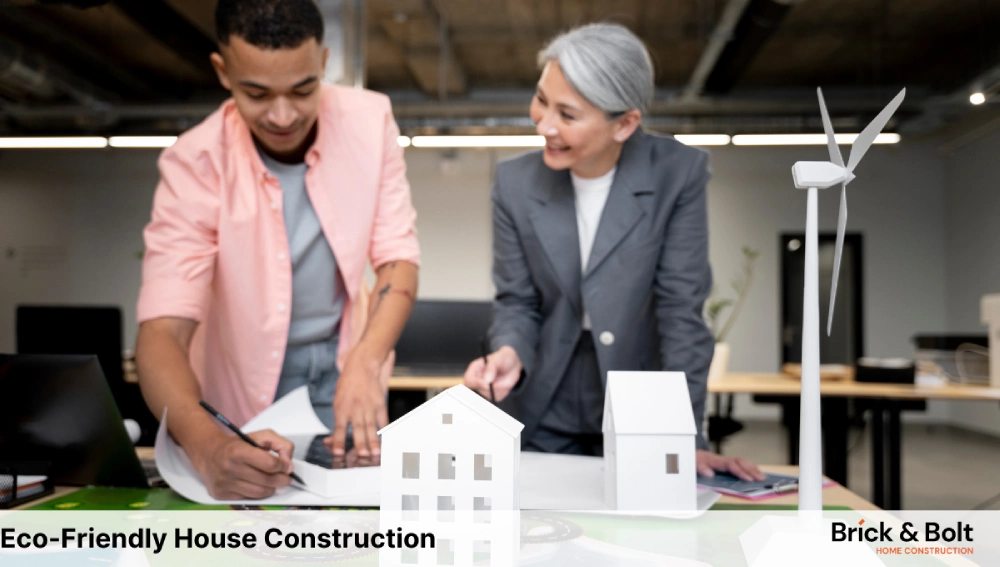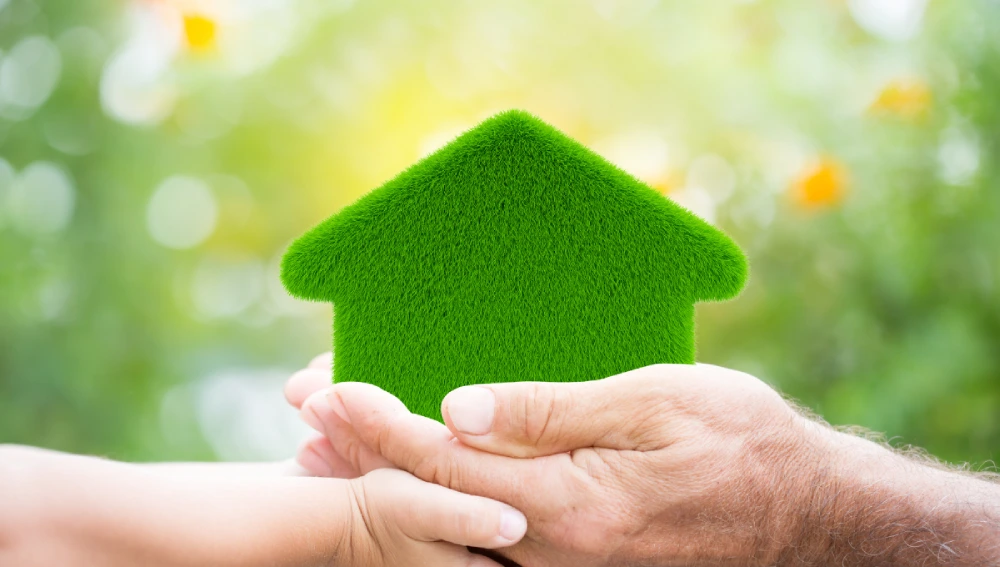In today’s eco-friendly culture, how people build their homes matters a lot. As the population grows, these structures foster efficient use of the earth’s resources.
In this blog, we will cover the basics of green building, learn how to practice green home construction and review some questions about environmental construction.
- 1 What Is Eco-Friendly House Construction?
- 2 Key Principles of Eco-Friendly Construction
- 3 How to Implement Green Home Construction?
- 3.1 Define Your Green Goals
- 3.2 Consider Local Climate
- 3.3 Choose a Sustainable Location
- 3.4 Passive Solar Design
- 3.5 Energy-Efficient Design
- 3.6 Prioritize Recycled and Reclaimed Materials
- 3.7 Durable and Low-Maintenance Materials
- 3.8 Water-Efficient Fixtures
- 3.9 Rainwater Harvesting
- 3.10 Renewable Energy Sources
- 3.11 Minimize Construction Waste
- 3.12 Research Government Incentives
- 4 Conclusion
- 5 FAQs
What Is Eco-Friendly House Construction?
Eco-friendly house construction entails making houses that reduce harm to the environment. This happens during the design and construction phases and during their usage phase. This approach entails embracing sustainable use of materials, energy, and water and preventing wastage.
Key Principles of Eco-Friendly Construction
Sustainable Materials
Green construction materials must be renewable and recyclable and must not harm the environment. Some examples are bamboo, reclaimed wood, recycled steel, low-VOC paints, and coatings.
Energy Efficiency
Some aspects are proper insulation, quality windows, and energy-efficient appliances. When designed well, they can minimize a home’s energy use.
Water Conservation
There are ways to use less water in green homes. They include installing low-flow faucets and showerheads, harvesting rainwater, and using native plants in the lawns.
Waste Reduction
Aim to reduce inappropriate construction waste disposal by reusing materials and using pre-fabricated parts. This will reduce environmental impact.
How to Implement Green Home Construction?

Define Your Green Goals
It helps to define your sustainability goals and the reasons for your green home project.
Consider Local Climate
When designing a home, ensure it uses natural light and air. Use them based on the region’s climate.
Choose a Sustainable Location
You can reduce environmental impacts and save resources by picking a site with fewer interferences to the ecosystem. It should also have room for biodiversity and be near infrastructure.
Passive Solar Design
Only a few mechanical systems are used for heating and cooling. Instead, use design strategies that let the building rely on solar heating and natural ventilation.
Energy-Efficient Design
Install eco-friendly features. For example, add new LED lights, efficient temperature controls, and solar panels. These changes will cut tariffs.
Prioritize Recycled and Reclaimed Materials
This way, one can minimize the need for new materials. This is especially true in construction. Use materials from old structures or made from recycled material.
Durable and Low-Maintenance Materials
Choose long-lasting materials to avoid issues like seepage & leakage. These materials do not need regular replacing or refurbishing. Choose long-lasting products to reduce the impact of maintenance waste on the environment.
Water-Efficient Fixtures
Encourage using water-efficient equipment, such as low-flow toilets, faucets, and showerheads. These devices save water while still using it efficiently.
Rainwater Harvesting
Use the water for laundry, washing vehicles, and watering gardens. Also, it is used to wash paths, walls, and open spaces. It is also for sanitation. This cuts the demand for municipal water.
Renewable Energy Sources
Install solar panels to get sunlight, use wind turbines to get wind energy, or go geothermal to access heat from deep in the earth. Do this to make renewable energy for your home.
Minimize Construction Waste
Schedule construction to make less waste. Ensure reuse, recycling, and donation to cut landfill waste.
Research Government Incentives
Find other environmental rewards. They can cut the cost of green construction and spur sustainable building.
Conclusion
Green homes are more than a fad. They are a way of life as innovative buildings become eco-friendly. You can make eco-friendly homes by using green building principles and sustainable resources. Also, focus on efficient use of energy and water. They will also be healthy, comfortable, and cheap to maintain.
FAQs
Of course, green building practices involve using fewer resources and creating less waste. They also encourage sustainability. So, they are an eco-friendly way to build.
Passive solar homes use natural heating and ventilation, have an energy-efficient design, and are among the most efficient home types.
Building an eco-friendly house would use sustainable materials and efficient systems. It would also use water-saving fixtures and renewable energy, reducing its impact on the environment.
An ecological house must be designed and built using sustainable materials. It must also use energy and water efficiently, handle waste well, and use renewable energy.

